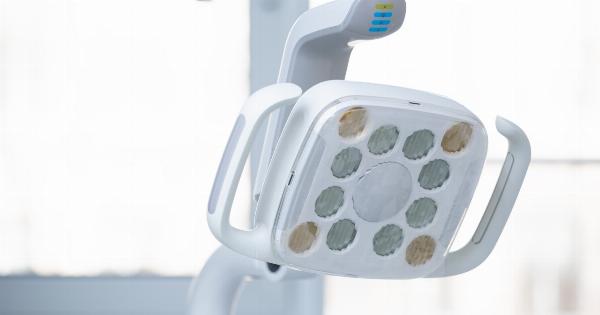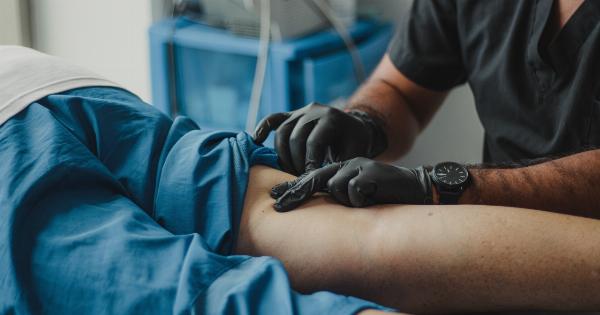Corrective jaw surgeries, also known as orthognathic surgeries, are performed to address functional and aesthetic concerns associated with the jaw.
These surgical procedures can significantly improve a person’s ability to bite, chew, speak, and breathe properly. Additionally, jaw surgeries can enhance facial harmony and improve a person’s self-confidence.
If you are considering undergoing jaw surgery, it is essential to have a comprehensive understanding of the procedure, its benefits, risks, recovery process, and cost. This article aims to provide a complete overview of jaw surgeries to help you make an informed decision.
Types of Jaw Surgeries
There are several types of jaw surgeries, each targeting specific concerns. The most common types include:.
1. Maxillary Osteotomy
A maxillary osteotomy is a procedure that involves the repositioning of the upper jaw. This surgery is performed to correct issues related to the upper jaw, such as an overbite, underbite, open bite, or crossbite.
Maxillary osteotomy can improve the alignment of the teeth, enhance facial aesthetics, and address breathing difficulties caused by jaw misalignment.
2. Mandibular Osteotomy
Mandibular osteotomy involves repositioning the lower jaw to correct problems such as an underbite, overbite, or receding chin.
This surgery aims to improve facial balance, enhance the ability to bite and chew, and address speech difficulties caused by jaw misalignment.
3. Genioplasty
Genioplasty is a surgical procedure that focuses on reshaping the chin. It can be performed in isolation or in combination with other jaw surgeries to achieve optimal facial harmony.
Genioplasty can address concerns such as a weak or prominent chin, asymmetry, or chin projection.
4. Combination Procedures
In some cases, a combination of maxillary osteotomy, mandibular osteotomy, and genioplasty may be required to achieve the desired results. These combined procedures are often performed to address complex jaw abnormalities or severe malocclusions.
Benefits of Jaw Surgeries
Jaw surgeries offer numerous benefits to individuals with jaw misalignment or functional issues. Some of the key advantages include:.
1. Improved Bite Function
Jaw surgeries can correct malocclusion and improve the alignment of the teeth, resulting in improved bite function. This allows for better chewing and more efficient dental occlusion.
2. Enhanced Facial Aesthetics
Orthognathic surgeries can significantly improve facial aesthetics by restoring facial balance and harmony. These procedures can address concerns like a protruding or receding jaw, asymmetry, and imbalances between the upper and lower jaws.
3. Alleviation of Breathing Difficulties
Individuals with severe jaw misalignment often experience breathing difficulties, such as obstructive sleep apnea. Jaw surgeries can help alleviate these problems by repositioning the jaw and improving the airway passage.
4. Improved Speech
Jaw misalignment can have a considerable impact on speech. Corrective jaw surgeries can enhance speech clarity and articulation by positioning the jaw in its ideal alignment.
Risks and Considerations
As with any surgical procedure, jaw surgeries also carry certain risks. It is essential to be aware of these potential risks and consider them before making a decision. Some of the risks associated with jaw surgeries include:.
1. Infection
Any surgical procedure comes with the risk of infection. Although rare, infections can occur after jaw surgery. Proper post-operative care and following all hygiene recommendations can greatly reduce the risk of infection.
2. Nerve Injury
Jaw surgeries involve working near nerves, which increases the possibility of nerve injury. This can result in temporary or permanent sensory changes, such as numbness or tingling in the face, lips, or tongue.
However, nerve injuries are relatively uncommon in jaw surgeries.
3. Jaw Stiffness
Following jaw surgery, some patients may experience jaw stiffness or difficulty in opening and closing their mouths. This condition, known as trismus, typically resolves within a few weeks or months through guided physical therapy.
4. Changes in Bite
Minor changes in bite may occur after jaw surgery. These changes can be addressed through orthodontic treatment in combination with the surgery.
Recovery Process
The recovery process after jaw surgery can vary depending on the complexity of the procedure and individual healing capabilities. Here are some general guidelines:.
1. Hospital Stay
Immediately following the surgery, patients are usually kept under observation in the hospital for a day or two. This allows the medical team to monitor the initial healing process and manage any potential complications.
2. Pain Management
Pain and discomfort are common after jaw surgery, but they are typically manageable with prescribed medications. It is essential to follow the medication schedule as instructed and consult the surgeon if the pain becomes severe or uncontrollable.
3. Dietary Restrictions
During the initial phase of the recovery process, a soft or liquid diet is recommended to avoid putting excess strain on the jaw. Gradually, as the healing progresses, a more normal diet can be reintroduced as advised by the surgeon.
4. Oral Hygiene
Proper oral hygiene is crucial during the recovery period. Gentle brushing and rinsing with a prescribed mouthwash can help prevent infection and promote healing. It is essential to follow the given instructions on oral care carefully.
Preparing for Jaw Surgery
Proper preparation for jaw surgery can contribute to a smoother surgical experience and recovery process. Here are some important tips to consider:.
1. Choose an Experienced Surgeon
Selecting a skilled and experienced oral and maxillofacial surgeon is crucial for a successful outcome. Do thorough research, read reviews, and consult with multiple surgeons before making a decision.
2. Understand the Procedure
Gain a thorough understanding of the proposed jaw surgery procedure, including its benefits, risks, and expected outcomes. Discuss any concerns or questions with your surgeon to ensure clarity and confidence in your decision.
3. Follow Pre-operative Instructions
Your surgeon will provide you with specific pre-operative instructions to follow. These instructions may include guidelines on fasting, medication adjustments, and lifestyle changes before the surgery.
It is important to adhere to these instructions strictly to minimize any potential complications.
4. Plan for the Recovery Period
Arrange for any necessary support or assistance during the recovery period, especially if you live alone or have specific needs.
Stock up on soft foods, prepare your recovery area with comfortable pillows, and plan for some time off from work or other responsibilities.
Cost of Jaw Surgery
The cost of jaw surgery can vary significantly depending on factors such as the type of surgery, the complexity of the case, geographical location, surgeon’s expertise, hospital fees, and insurance coverage.
It is essential to consult with your surgeon and insurance provider to understand the cost implications and available financial options.
Conclusion
Corrective jaw surgeries offer a comprehensive solution for individuals with jaw misalignment or functional issues. These surgeries can significantly improve bite function, facial aesthetics, breathing difficulties, and speech clarity.
While facing some risks, the benefits of jaw surgeries are substantial and can greatly enhance quality of life. By understanding the different types of jaw surgeries, their benefits, risks, recovery process, and cost, individuals can make well-informed decisions and embark on a transformative journey towards improved oral functionality and facial harmony.




























